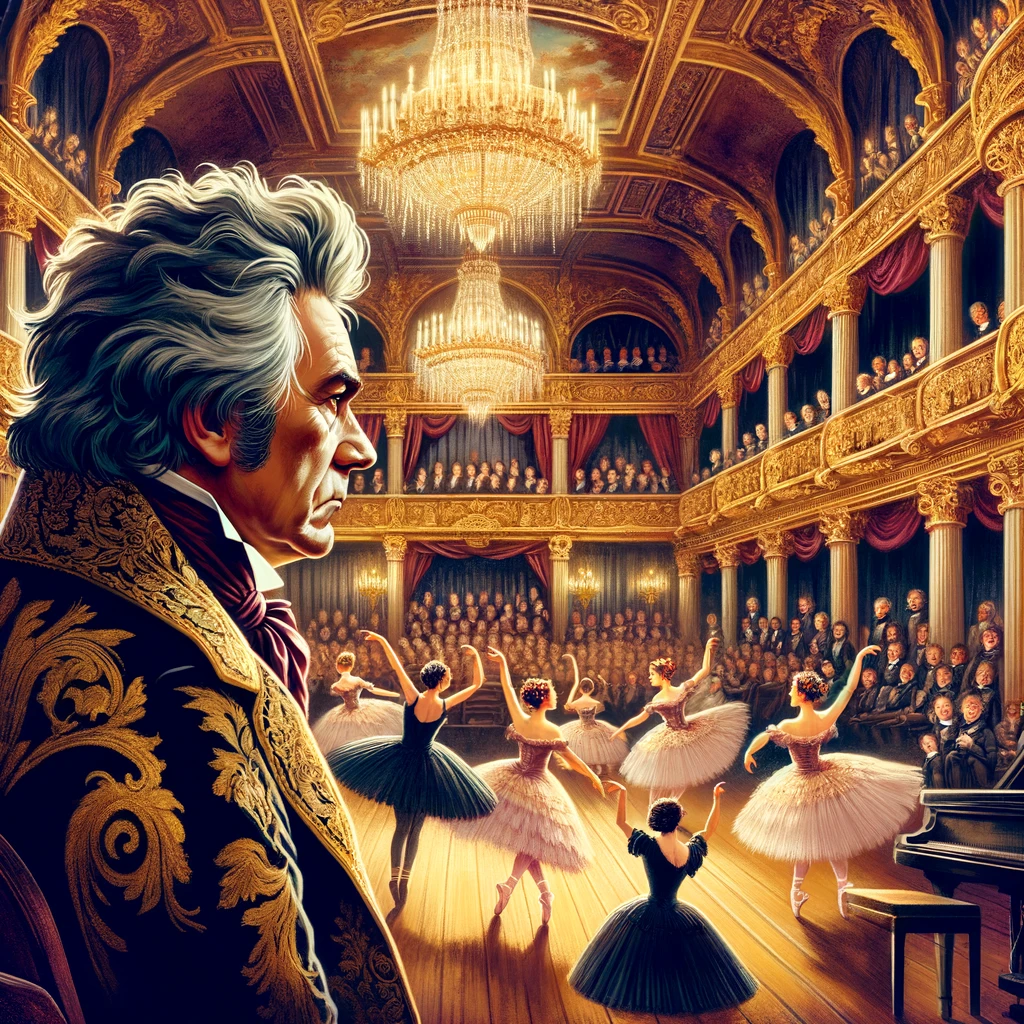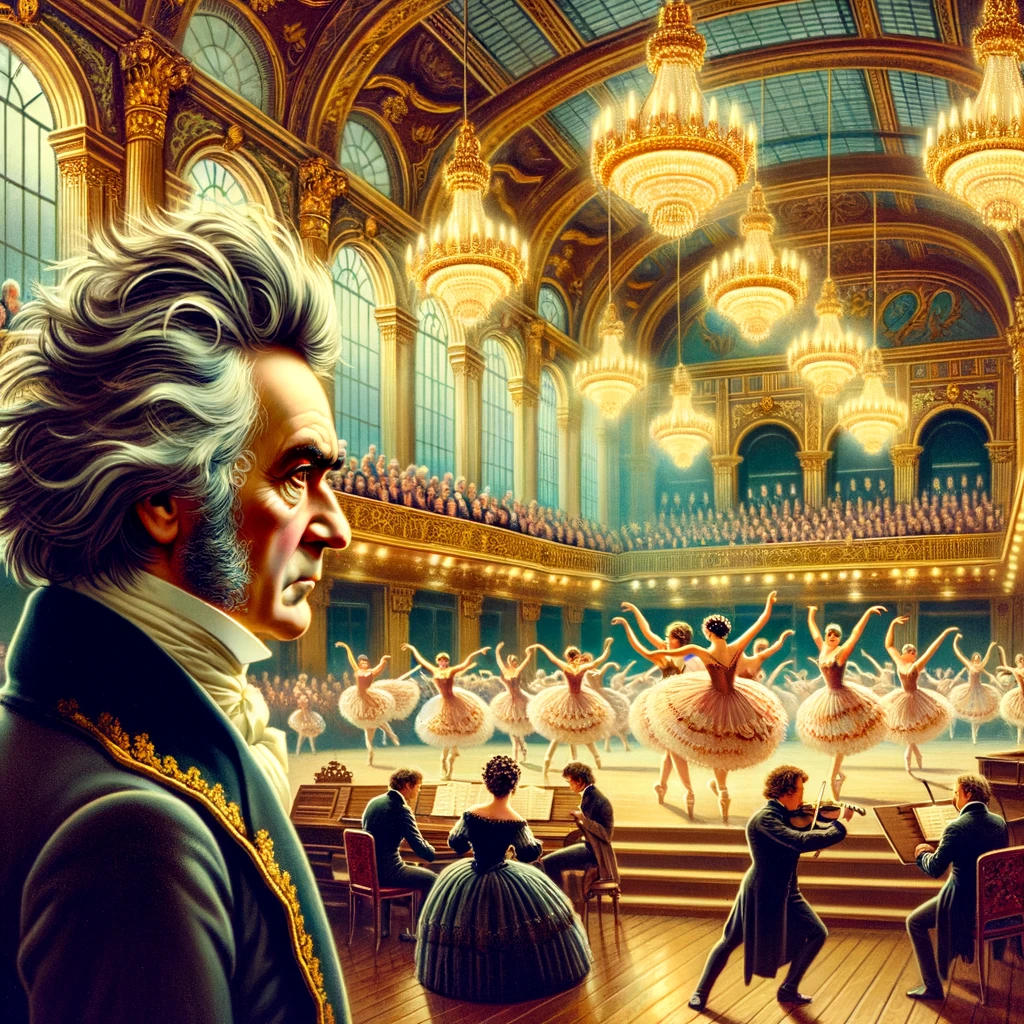
Beethoven’s Passion for Dance and Ballet
Ludwig van Beethoven, a titan of classical music, is universally celebrated for his symphonies, sonatas, and quartets. However, lesser known are his profound connections with dance and ballet which played a significant role in his personal and professional life. This article delves into how dance influenced Beethoven’s musical output and offers a fresh perspective on the composer’s artistic expressions.
Early Encounters with Dance
Beethoven’s introduction to dance came early in his life. Born in Bonn in 1770, he was exposed to a rich cultural milieu. His father, Johann, although a stern figure, was instrumental in ensuring that young Ludwig received a comprehensive musical education, which included learning dance forms popular during that era. In the late 18th century, dance was not merely a form of entertainment but a vital element of social etiquette and cultural life.
As a young musician, Beethoven played for ballet rehearsals and social dances, experiences that offered him firsthand insight into the structure and rhythm of dance music. These experiences were crucial in forming his understanding of timing and movement in music, elements that would later define his compositional style.
Dance Music Compositions
Contrary to what might be expected of someone predominantly known for grandiose, dramatic compositions, Beethoven actually wrote a considerable amount of music specifically for dance. His collection includes numerous German dances, minuets, and other pieces meant to accompany dancing. One notable example is the “Twelve Minuets,” WoO 7, composed in 1795, which were intended for public balls in Vienna.
These dance compositions are often overlooked when discussing Beethoven’s oeuvre but are critical in understanding his work’s rhythmic aspects. The music Beethoven composed for these settings was not mere background noise; each piece was crafted with attention to the dancers’ needs, ensuring it was both enjoyable and functional.
Ballet Collaborations
One of the most significant points of intersection between Beethoven and ballet came with his involvement in the ballet “The Creatures of Prometheus,” Op. 43. This work, premiered in 1801, is a pivotal piece that illustrates his ability to blend dramatic narrative with music. The ballet’s storyline revolves around Prometheus, who brings enlightenment to humanity. Beethoven’s score for this ballet is replete with dramatic crescendos and subtle musical nuances that enhance the narrative’s emotional depth.
This ballet score provides insight into Beethoven’s narrative skills, showing his ability to tell a story purely through instrumental music. The success of “The Creatures of Prometheus” demonstrated that Beethoven could transcend the traditional boundaries of symphonic music to contribute meaningfully to ballet.
Personal Life and Dance
Beethoven’s personal diaries and letters also shed light on his views toward dance. He frequently attended balls and dance events in Vienna, not merely as a composer or performer but as an active participant. Despite his worsening hearing impairment, Beethoven remained closely tied to the dance community, attending balls and social gatherings as long as he was able. His continued engagement with dance highlights its importance not just as a professional obligation but as a cherished personal activity.
Influence on Later Compositions
The rhythmic precision and dynamic variations in Beethoven’s symphonies and other works bear the marks of his deep understanding of dance. The famous “Ode to Joy” from his Ninth Symphony, for instance, employs rhythms that can be traced back to dance forms he composed earlier in his career. This connection may not be immediately apparent but becomes clearer when one considers the dance-like timing and phrasing within his more complex compositions.
Furthermore, his late quartets, often seen as abstract and highly personal works, incorporate dance rhythms that lend a structural coherence and accessibility to these compositions. This blend of the abstract with the physically engaging elements of dance music points to a composer who saw music as a holistic art form, deeply connected to the human experience.
Ludwig van Beethoven’s engagement with dance and ballet was more than just a professional undertaking—it was a fundamental component of his artistic expression and personal enjoyment. By examining his dance compositions and his involvement with ballet, we gain a fuller picture of Beethoven as a composer deeply attuned to the rhythmic and expressive possibilities of music. This perspective not only enriches our understanding of his more famous symphonic works but also highlights the interconnectedness of art forms and their influence on one of history’s greatest musical minds.

Beethoven’s approach to integrating dance into his musical compositions was not merely a professional obligation but a deeply personal choice that reflected his understanding and appreciation of the art form. This continuation of our exploration into Beethoven’s relationship with dance and ballet further uncovers the subtleties of his interactions with these art forms and their lasting impact on his legacy.
Beethoven and the Viennese Waltz
Vienna in the late 18th and early 19th centuries was the epicenter of the waltz, a dance form that was sweeping through Europe. Beethoven, residing in the heart of this cultural whirlwind, composed several waltzes. Although not as prolific in this genre as some of his contemporaries, such as Johann Strauss, who was later dubbed the “Waltz King,” Beethoven’s contributions to the waltz repertoire are notable for their sophistication and complexity.
These pieces, while crafted to be danced to, contain intricacies that challenge both dancers and musicians. They exemplify how Beethoven was able to elevate a popular dance form to the level of art music, infusing it with his signature motifs and rhythmic innovations. This ability to blend popular and classical elements highlights Beethoven’s versatility as a composer and his deep connection to the social and cultural currents of his time.
Educational Role of Dance in Beethoven’s Workshops
Beethoven was known for his demanding standards and his rigorous approach to music education. He often used dance as a tool in his teaching to help his students understand musical timing, expression, and the importance of physical movement in performance. This educational approach underscored the importance of bodily rhythm and movement as foundational elements of musical interpretation and performance.
By integrating dance into his teaching methods, Beethoven imparted to his students a sense of music as a dynamic and embodied art form. This perspective was somewhat ahead of its time, anticipating later developments in musical education that recognize the importance of physicality in musical training.
Social Dance and Network Building
Beyond the composition and education, dance served another critical role in Beethoven’s life: networking. The balls and dance events of Vienna were not merely social or recreational activities; they were crucial for building relationships, securing commissions, and interacting with patrons. Beethoven, despite his growing deafness, understood the importance of being part of these social gatherings.
His presence at these events, even as his hearing declined, indicates his determination to remain connected to the musical and cultural life of Vienna. It also demonstrates the social nature of music during this period, where composers had to navigate complex networks of patrons and influencers to advance their careers.
The Therapeutic Aspect of Dance in Beethoven’s Later Life
As Beethoven faced the challenges of increasing deafness, his engagement with dance took on a therapeutic dimension. Movement and dance provided a form of expression and communication that transcended his auditory limitations. This aspect of dance as therapy is often overlooked but is crucial in understanding how Beethoven might have coped with his isolation due to his hearing loss.
Conclusion
Beethoven’s relationship with dance and ballet reveals a facet of the composer that is often overshadowed by his larger symphonic works. Through his compositions, educational strategies, social activities, and personal challenges, dance remained a constant source of inspiration and comfort throughout his life.
Understanding Beethoven through the lens of dance offers a more nuanced view of his artistic persona, showing him as a composer deeply embedded in the cultural practices of his time, and whose music was informed as much by these practices as by his revolutionary vision. This exploration not only enriches our appreciation of Beethoven’s music but also deepens our understanding of the cultural context in which he created his enduring works.
By revisiting the dance halls of Vienna through Beethoven’s eyes, we gain a richer, fuller picture of a musical genius who lived vibrantly within his world, moving to its rhythms and composing the soundtrack for an era.
References
- Music scholars and historical documents that mention Beethoven’s involvement with dance and ballet.
- Analysis of Beethoven’s dance music compositions and their characteristics.
- Studies on “The Creatures of Prometheus” and its impact on ballet music.
- Personal letters and diary entries from Beethoven reflecting his views and experiences with dance.